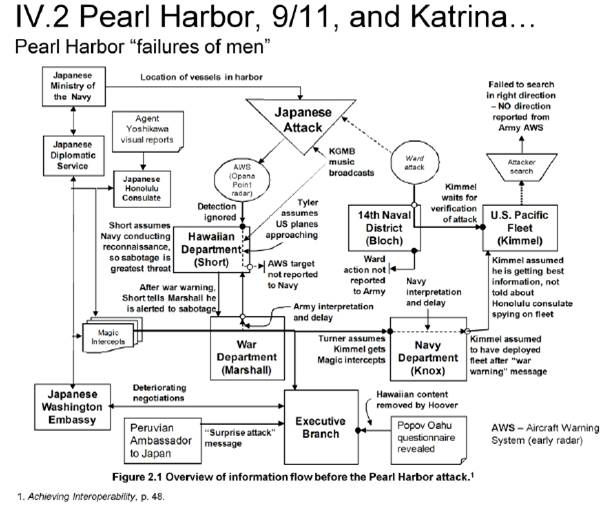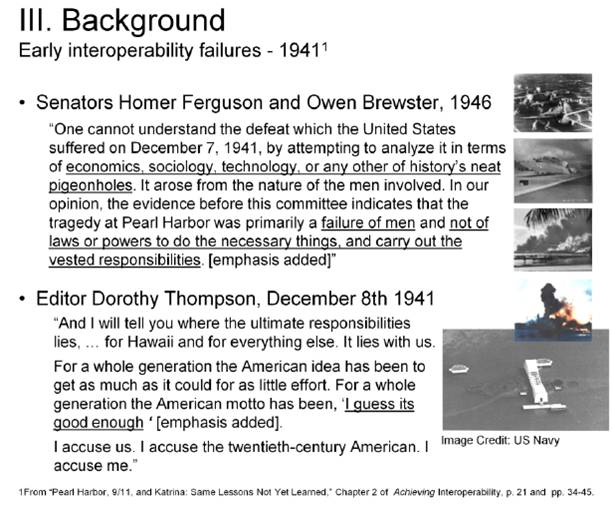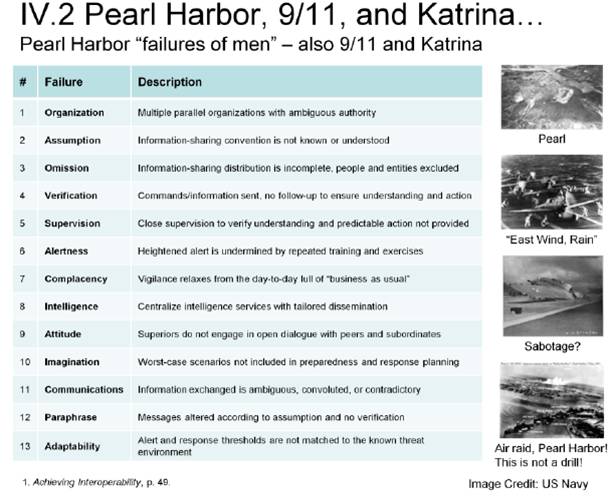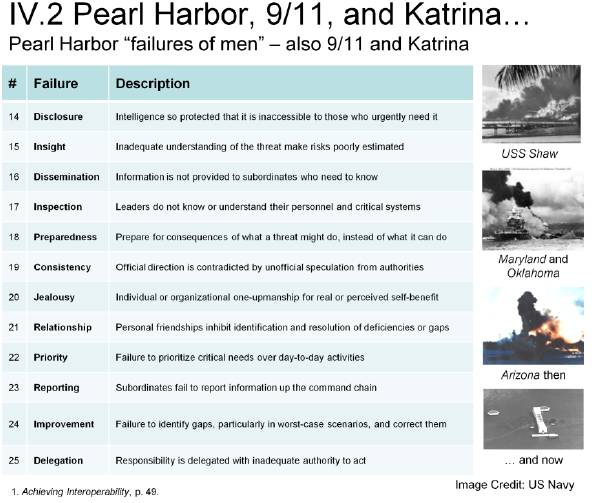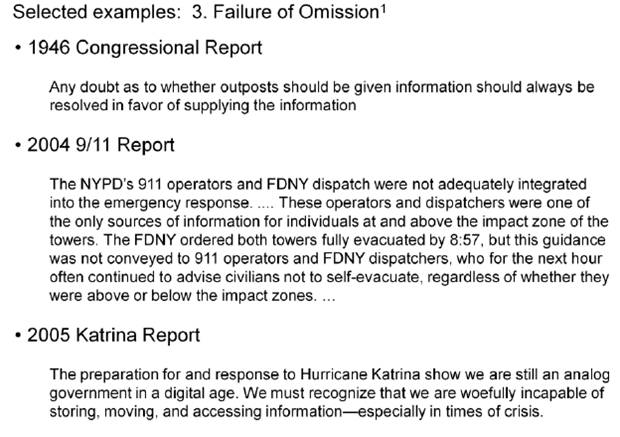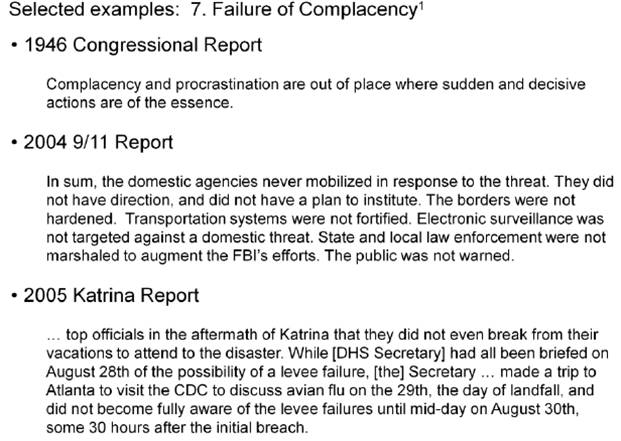Dec.06.2011
4:12 pm
by Ed Beakley
December 7, 1941: A Failure of Men
From Achieving Interoperability in Critical IT and Communications Systems by Bob Desourdis.
Torpedos could not be launched in the shallow water at Pearl Harbor… we said, we thought… the Japanese thought otherwise
When Bob Desourdis lectures on his book and “interoperability” for homeland security, he asks the technology focused audiences “what would you do if you had all the information you thought you needed and all the associated technology that would allow that information to be available?” He suggests strongly, we’d still not get things right. Project White Horse 084640 is mostly based on agreeing with Desourdis. People, ideas, technology… it’s always most about people… and the will to be ready for whatever might come, at all levels, leaders most assuredly, but also us. Please consider these introductory elements from Bob’s book and tutorial as you reflect on events and consequences from 70 years past.
This information flow diagram shows the principal sources of knowledge that the U.S. had before the attack –yet complete surprise (codenamed To-ra, to-ra, to-ra) was still achieved. The diagram shows many, though not all, of the information available to authorities –but the lack of holistic interoperability meant to achieve Hawaiian defense failed. … there were many failures that haunt our more recent disasters and, in all likelihood, our awareness, response, and recovery from the next disaster.
…from the minority report on the Pearl Harbor attack, when the two senators stated that it was “the failure of men,” and not any other reason, that led to the success of the Japanese attack. … these “failures” were well documented in the majority report and are presented in what follows. Note that the congressional investigation was performed in 1946, though the event was December 7, 1941, because Congress did not want to pull commanders out of the Pacific during the war. On December 8th, a second key quote –which belies many of today’s failed interoperability among people, processes, and tools, is that many people at all levels of leadership –and for various reasons we suggest in what follows –believe their abilities and capabilities are “good enough,” and they are inevitably wrong.
Thirteen of the 25 failures reported in the congressional investigation of the attack on Pearl Harbor were largely independent of technology –these were failures of men:
•Lack of coordination among personnel in different organizations or parts of the same organization
•Assumption that others were taking action, but failure to verify what was assumed
•Failure to think through the entire defense enterprise that protected the fleet in port
•Missed, ignored, paraphrased, or failed to verify messages that failed to prompt an expected reaction.
The remaining 12 Pearl Harbor failures (are)primarily leader shortsightedness and inter-organizational jealousy, letting their personal relationships impact their planning and decisions, while delegating responsibility with limited authority.
(Now) show quotes from the 2004 9/11 Report and the 2005 Katrina Report demonstrating the same type of failure of organization as evident in the Pearl Harbor investigation. A clear lesson taught by 1946 that was ignored through 2005, and arguably is largely ignored today at all levels of government.
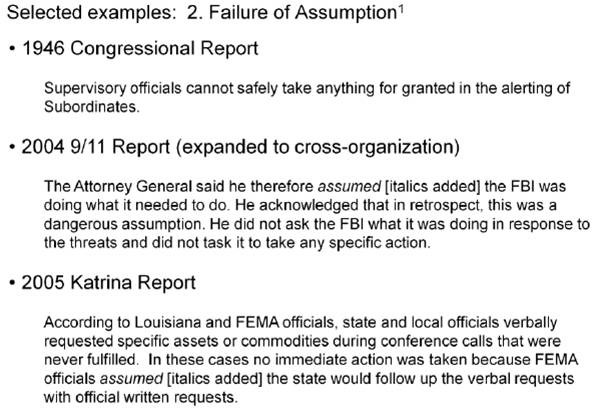
Filed in Uncategorized | Comments Off on December 7, 1941: A Failure of Men

